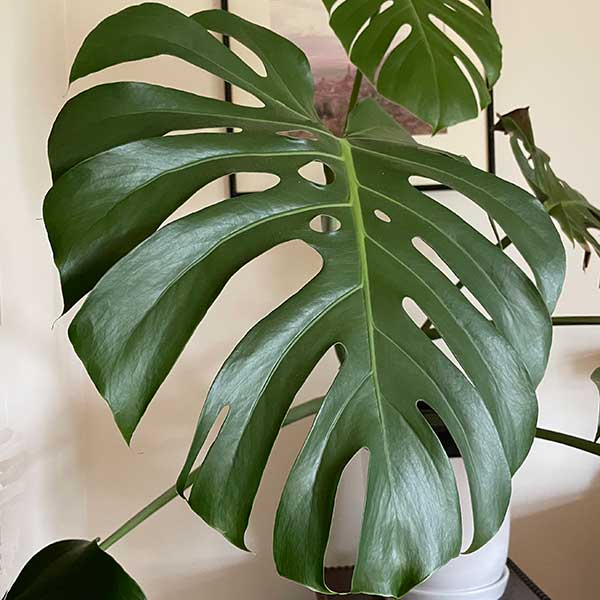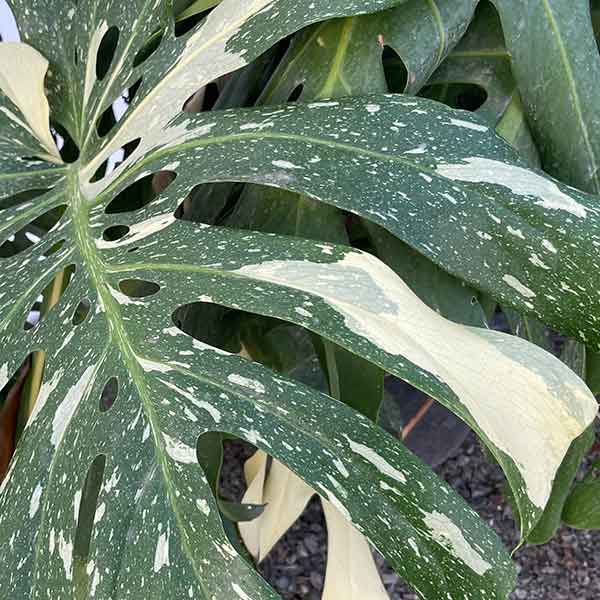The Swiss Cheese Plant

In case you didn’t know, the most popular houseplant in America is the Swiss Cheese Plant, large leaves with holes in them, and its name is Monstera deliciosa.
M.adansonii has the same common name, however it is a very different plant.
What makes this tropical looking plant so popular?
- Firstly the foliage, large glossy green leaves with interesting hole in them. The holes are called fenestrations, and its popular from New York to Hawaii and anther 14 states to boot.
- Secondly, as an indoor plant its easy care, so lets’ take a look at how to grow the Swiss Cheese Plant.
- And one more – A variegated variety is also available, commonly called Monstera Albo, it is much more expensive but a very impressive plant.

How to Grow Monstera deliciosa
Being an understory plant, it naturally grows in shade, so it makes a great indoor plant.
- Choose a position out of direct sun, direct sun can quickly cause leaf burn.
- Use a pot or container with large grange holes.The Swiss Cheese Plant does not like wet feet, in fact it is naturally epiphytic
- Use a humus rich but free draining potting mix.
- Grow it away from air conditioning ducts and heating ducts. Both of these lower humidity, it like some humidity.
- Water only when the soil begins to dry, overwatering can cause root problems.
- Provided something to support the plant, it is naturally a climbing plant, and you will get larger leaves with better fenestration if it has some support.
- Fertilise once a year with a slow release organic fertiliser.
- In spring through to summer use a liquid fertiliser every 4 weeks.
We are asked
- Can you grow Monstera deliciosa outdoors
Yes. Don’t grow this plant outdoors if temperatures are likely to reach less than 50F the best temperature range is 60 to 85 degrees. - What is the best position Indoors?
The best position indoors is out of direct sun from windows, but with bright light. If you can a read a book easily then this a good amount of light. - Whats the difference between Monstera deliciosa and Monstera adansonii, as both are called the Swiss Cheese Plant?
M. adansonii has smaller leaves, is more vigorous in growth and is also a little more fussy about growing conditions. - Is the Swiss cheese plant toxic to cats and dogs?
No really simple answer to this. However if you cat or dog decides to eat the plant they will suffer, usually pain in the mouth and swelling. However the plant does not seem to be really be toxic. So consult you local Veterinary Expert on that one.

